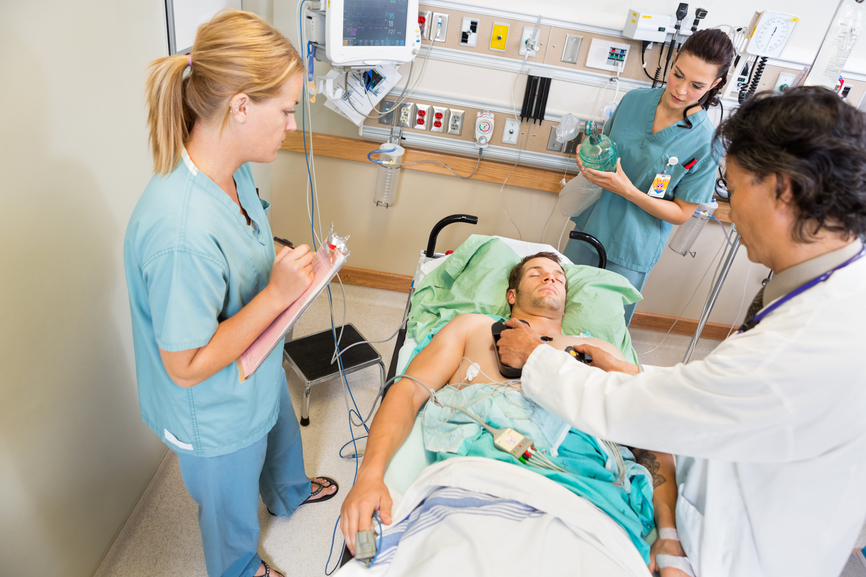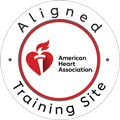Introduction
Cardiopulmonary Resuscitation (CPR) is a crucial life-saving technique used in emergencies when someone’s breathing or heartbeat has stopped. It’s a skill that can mean the difference between life and death, making it essential for everyone to understand its basic principles. In recent years, the approach to CPR has evolved, introducing the concept of CAB. But what exactly does CAB mean in CPR, and why is it important?
This comprehensive guide will delve into the CAB approach, explaining its significance and how it has changed the landscape of emergency response. Whether you’re a healthcare professional, a first responder, or simply someone interested in being prepared for emergencies, understanding the CAB method in CPR is crucial.

The Evolution of CPR Guidelines
Traditional ABC Approach
For decades, the standard approach to CPR followed the ABC method:
- A – Airway: Open the airway
- B – Breathing: Check for breathing
- C – Circulation: Start chest compressions if there’s no pulse
This sequence was taught to generations of first responders and medical professionals. The focus was establishing an open airway first, then providing rescue breaths, before finally starting chest compressions.
Transition to CAB and Reasons for the Change
In 2010, the American Heart Association (AHA) made a significant change to its CPR guidelines, introducing the CAB approach:
Call Us Now
Get the Best CPR Class in Columbus Today!
- C – Compressions
- A – Airway
- B – Breathing
This change wasn’t made lightly. It came after years of research and real-world data analysis. The primary reasons for this shift include:
- Emphasis on blood circulation: Maintaining blood flow to vital organs is crucial in cardiac arrest. Chest compressions achieve this more effectively than rescue breaths alone.
- Reducing delay in compressions: With the ABC method, there was often a delay in starting chest compressions while rescuers focused on the airway and breathing. CAB ensures compressions start immediately.
- Simplifying the process: Many bystanders were hesitant to perform mouth-to-mouth resuscitation. By prioritizing compressions, the CAB method makes it easier for untrained individuals to start CPR promptly.
- Addressing the most common cause: Most adult cardiac arrests are due to heart problems rather than respiratory issues. Starting with compressions addresses this primary concern immediately.
This shift to CAB marked a significant change in CPR protocols, emphasizing the critical importance of chest compressions in saving lives during cardiac emergencies.
What is CAB in CPR?
The CAB approach in CPR stands for Compressions, Airway, and Breathing. Let’s break down each component:
C – Compressions
Chest compressions are now the first step in CPR. They involve pushing hard and fast on the center of the chest to pump blood to vital organs, especially the brain and heart.
Key points:
- Push at a rate of 100-120 compressions per minute
- Compress the chest at least 2 inches (5 cm) deep for adults
- Allow full chest recoil between compressions
- Minimize interruptions in compressions
A – Airway
After a set of compressions, the next step is to open the airway. This is typically done using the head-tilt, chin-lift method:
- Place one hand on the person’s forehead and gently tilt their head back
- With your other hand, gently lift the chin forward to open the airway
For suspected neck injuries, use the jaw-thrust method instead to avoid moving the neck.
B – Breathing
Once the airway is open, check for normal breathing. If the person is not breathing or only gasping, proceed with rescue breaths:
- Pinch the nose shut and create a seal over the person’s mouth with yours
- Give two rescue breaths, each lasting about 1 second
- Watch for chest rise with each breath
For trained professionals using a bag-valve-mask, this step involves delivering breaths using the device.
Detailed Explanation of Each Step
Chest Compressions: Technique and Importance
Chest compressions are the cornerstone of effective CPR. They manually pump blood through the body, delivering oxygen to vital organs and tissues. Proper technique is crucial:
- Position: Kneel beside the chest, with your shoulders directly over your hands.
- Hand placement: Place the heel of one hand on the center of the chest, and the other hand on top.
- Arm position: Keep your arms straight, and elbows locked.
- Body movement: Use your body weight to compress, not just arm strength.
- Depth and rate: Aim for at least 2 inches deep at 100-120 per minute.
- Recoil: Allow full chest recoil between compressions to let the heart refill with blood.
The importance of high-quality compressions cannot be overstated. They’re the primary driver of blood flow during CPR and have been shown to improve survival rates when performed correctly.
Airway: Opening and Clearing
An open airway is essential for effective breathing. The head-tilt, chin-lift method is used to open the airway:
- Place one hand on the forehead to tilt the head back gently.
- Use two fingers of the other hand under the bony part of the chin to lift it.
This maneuver lifts the tongue from the back of the throat, clearing the airway. In cases of suspected spinal injury, use the jaw-thrust method instead:
- Place your hands on either side of the person’s head, with your fingers under the angles of the lower jaw.
- Lift the jaw to bring the chin forward without moving the head or neck.
Breathing: Mouth-to-Mouth or Bag-Valve-Mask Ventilation
After opening the airway, check for normal breathing. If absent:
For mouth-to-mouth:
- Pinch the nose closed.
- Take a normal breath and place your mouth over the person’s mouth, creating a seal.
- Give two 1-second breaths, watching for chest rise.
For bag-valve-mask (for trained professionals):
- Position the mask over the nose and mouth.
- Use the E-C clamp technique to hold the mask in place.
- Squeeze the bag to deliver each breath over 1 second, watching for chest rise.
Remember, in hands-only CPR for untrained bystanders, rescue breaths are omitted, focusing solely on continuous chest compressions.
Why CAB is Preferred Over ABC
The shift from ABC to CAB in CPR protocols represents a significant change in our understanding of effective resuscitation. Here’s why CAB is now the preferred approach:
- Emphasis on early chest compressions:
- Blood circulation is critical in the first few minutes of cardiac arrest.
- Chest compressions provide immediate blood flow to vital organs.
- Every second counts; CAB ensures compressions start without delay.
- Addresses the most common cause of cardiac arrest:
- In adults, cardiac arrests are often due to heart problems rather than respiratory issues.
- Immediate compressions tackle the root cause more directly.
- Simplifies the process for bystanders:
- Many people are hesitant to perform mouth-to-mouth resuscitation.
- CAB’s focus on compressions makes it easier for untrained individuals to start CPR.
- This can lead to more bystanders taking action in emergencies.
- Minimizes interruptions in blood flow:
- The ABC method often led to delays in starting compressions.
- CAB ensures minimal time is lost before blood circulation is restored.
- Aligns with the body’s oxygen reserves:
- The body has some oxygen reserves in the blood when breathing stops.
- Circulating this oxygen-rich blood through compressions is critical in the first few minutes.
Performing CAB in Different Scenarios
While the basic CAB principle remains the same, there are some variations in technique depending on the age of the person requiring CPR.
Adult CPR
- Use the heel of one hand with the other hand on top for compressions.
- Compress at least 2 inches (5 cm) deep at a rate of 100-120 compressions per minute.
- Use a 30:2 compression-to-breath ratio if giving rescue breaths.
Child CPR (Age 1 to Puberty)
- Use one or two hands for compressions, depending on the child’s size.
- Compress about 2 inches (5 cm) deep.
- Use a 30:2 compression-to-breath ratio for a single rescuer and 15:2 for two rescuers.
Infant CPR (Under 1 Year)
- Use two fingers for compressions, just below the nipple line.
- Compress about 1.5 inches (4 cm) deep.
- Use a 30:2 compression-to-breath ratio for a single rescuer and 15:2 for two rescuers.
- For breaths, cover both mouth and nose with your mouth.
Common Mistakes to Avoid in CAB Sequence
- Inadequate compression depth: Ensure you’re compressing deep enough.
- Incorrect hand position: Place hands on the center of the chest, not too low or high.
- Slow compression rate: Maintain a rate of 100-120 compressions per minute.
- Not allowing full chest recoil: Let the chest fully rise between compressions.
- Interrupting compressions for too long: Minimize pauses in compressions.
- Ineffective breaths: Ensure you see chest rise with each rescue breath.
- Delaying CPR: Start compressions immediately upon recognizing cardiac arrest.
CPR Training and Certification
While this guide provides an overview of the CAB approach in CPR, it’s crucial to receive proper training and certification. Here’s why:
- Hands-on practice: Training provides supervised practice on mannequins, helping you perfect your technique.
- Confidence building: Learning in a controlled environment builds confidence for real emergencies.
- Up-to-date information: CPR guidelines are regularly updated; training ensures you have the latest information.
- Legal protection: In many places, CPR certification provides some legal protection when responding to emergencies.
You can get CPR certified through organizations like:
- American Heart Association (AHA)
- American Red Cross
- National Safety Council
Many of these organizations offer both in-person and online training options.
Conclusion
Understanding the CAB approach in CPR is crucial for anyone interested in being prepared for medical emergencies. Let’s recap the key points:
- CAB stands for Compressions, Airway, and Breathing, representing a shift from the traditional ABC method.
- This change emphasizes the critical importance of early and high-quality chest compressions in improving survival rates for cardiac arrest victims.
- The CAB method is designed to:
- Prioritize blood circulation to vital organs
- Simplify the process for bystanders
- Address the most common causes of cardiac arrest in adults
- While the basic principle remains the same, there are slight variations in technique for adults, children, and infants.
- Common mistakes in performing CAB include inadequate compression depth, incorrect hand position, and interrupting compressions for too long.
- Although this guide provides a comprehensive overview, proper training, and certification are essential for building confidence and skills in performing CPR effectively.
Remember, in an emergency, any CPR is better than no CPR. The CAB method has simplified the process, making it more accessible for bystanders to take action. However, the best way to prepare yourself is through formal training and regular practice.
By understanding and applying the CAB approach in CPR, you’re equipping yourself with a powerful tool that could one day save a life. Whether you’re a healthcare professional, a first responder, or simply a concerned citizen, this knowledge is invaluable.
We encourage all readers to take the next step: sign up for a CPR certification course. The skills you learn could make a critical difference in an emergency. Stay prepared, stay informed, and be ready to act when every second counts.


